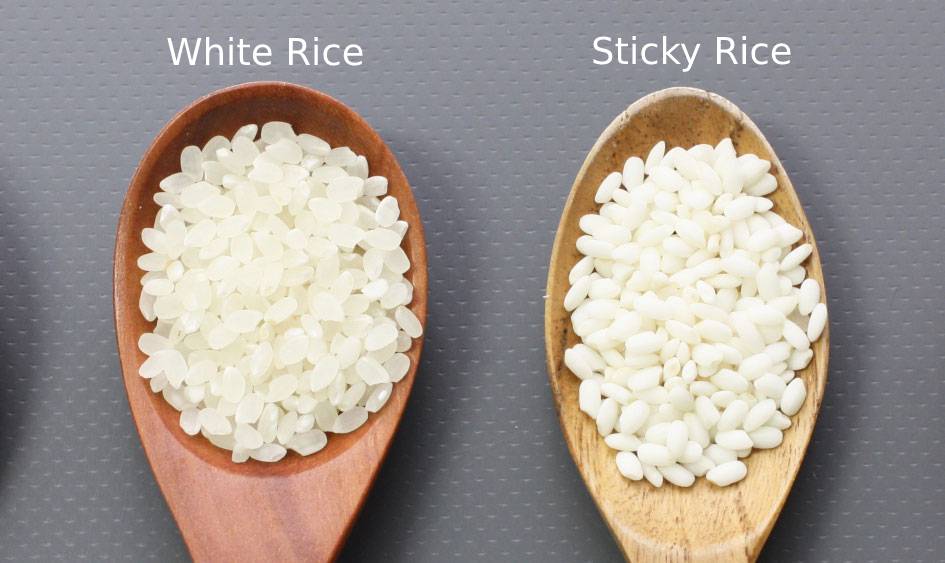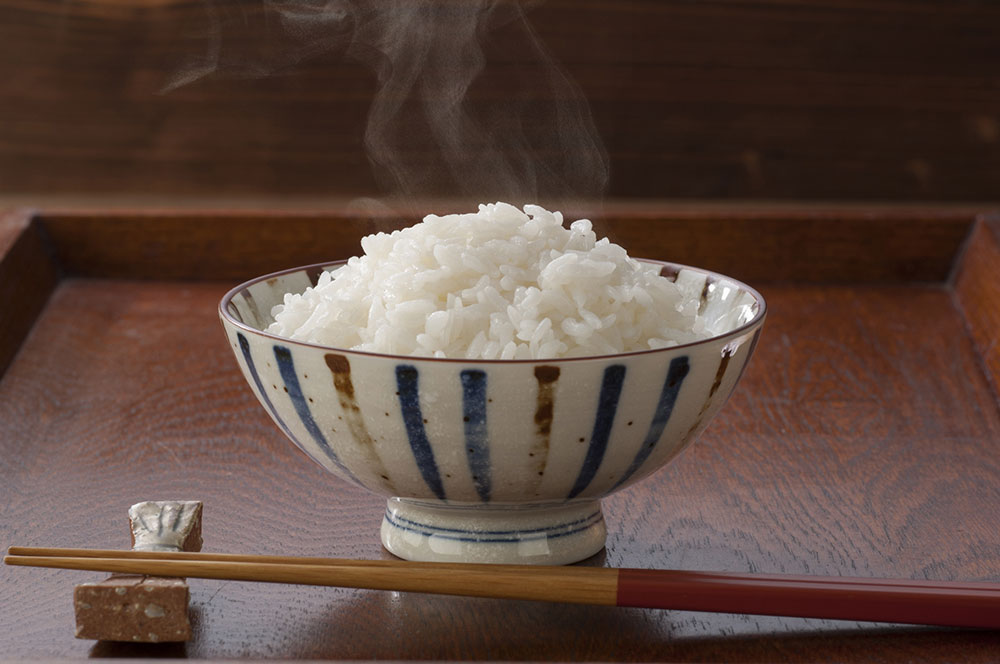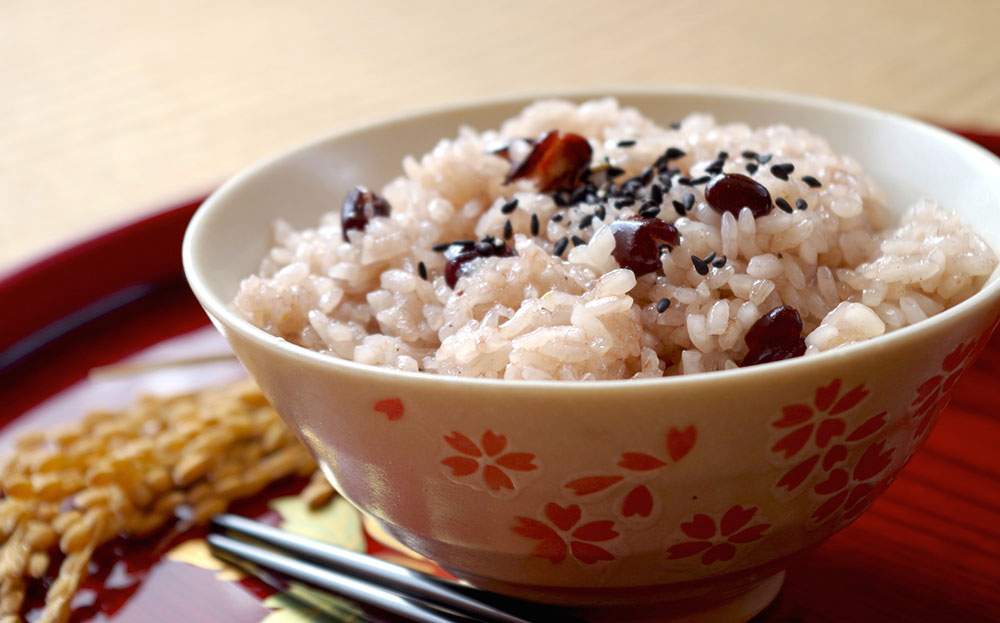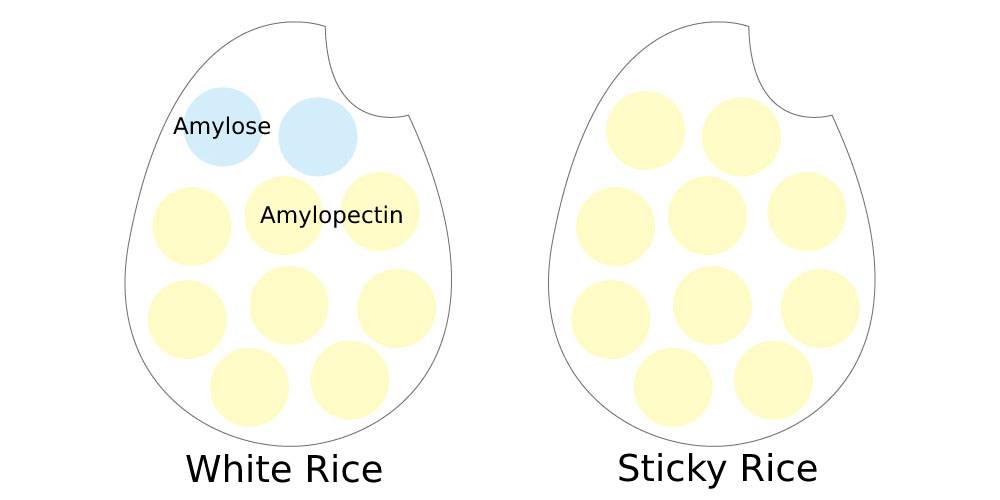Difference b/w regular Japanese rice and sticky rice

Rice is a staple food and an indispensable part of the Japanese diet. There are two types of rice in Japan: “regular Japanese rice (white rice)” and “sticky rice“. Do you know the differences? Let’s take a look at what the difference is.
This article is about
- What is white rice?
- What is the difference between sticky rice and white rice?
- What is the difference in calories and nutritional value between white rice and sticky rice?
- Is there a difference in the way they are cooked?

Knowing these differences makes eating rice so much more fun!
What is Japanese white rice?

This is the rice that Japanese people usually eat. In restaurants, it comes with set meals, beef bowls, etc. It is also used for sushi. Some people think that Japanese white rice is sticky rice because of its fluffy and glutinous texture, but sticky rice is more glutinous.
It is called “Uruuchi Mai (うるち米)”, “Sei Mai (精米)”, or “Haku Mai (白米)” in Japanese. There are many brands of rice such as “Koshihikari,” “Akita Komachi,” and “Hitomebore“.
What is sticky rice?

Sticky rice is used to make rice cakes and sekihan (steamed rice with Azuki beans). The above photo shows sekihan. Sticky rice is more glutinous, sticky, and sweeter than white rice.
Difference between Japanese white rice and sticky rice
There are the following differences between white rice and sticky rice.
- Difference in appearance
- Difference in starch
- Difference in cultivation
- Difference in cooking method
- Difference in calories and other nutrients
Let’s look at them one by one.
Difference in appearance

First, there is a difference in appearance between white rice and sticky rice. As shown in the picture, white rice is white and translucent, sticky rice is pure white and more rounded than white rice.
Difference in starch

Rice is made up of 70% starch. The major difference between white rice and sticky rice is determined by the difference in the properties of starch. There are two types of starch, amylose, and amylopectin, and their content differs.
White rice
Amylose: 15-20%
Amylopectin:80~85%
sticky rice
Amylopectin:100%
The characteristics of amylose and amylopectin have the following differences.
| Amylose | Water-soluble starch Containing amylose makes the cooked rice fluffy The more amylose, the crispier and less sticky the rice becomes Less amylose makes the rice sticky and glutinous |
| Amylopectin | Water-insoluble starch The more starch, the stickier and more glutinous the texture |
Japanese people tend to prefer “low amylose” rice. Generally, the amylose content of Niigata Koshihikari (famous rice in Japan) is around 16-17%.
In comparison, Indica rice (commonly known as Thai rice) is a high-amylose rice. Amylose content is 25-30% and amylopectin 70-75%.
Differences in Cultivation Methods
Cultivation methods differ between white rice and sticky rice. If both types of rice are grown near each other at the same time, pollen will be mixed, so they must be grown at different times of the year or in different rice paddies.
In addition, sticky rice tends to grow taller and fall over more easily, so nitrogen-based fertilizers should be used sparingly.
Differences in Cooking Methods
There are also differences in the way white rice and sticky rice are cooked. Let’s take a look at the differences between them.
White rice
- Cook rice with about 200 cc of water (6.76 oz) per 1 cup of rice (150g/5.29 oz).
- Soak the rice in water for 30-60 minutes.
The rice will be fluffier if it absorbs as much water as possible before cooking. Note that in Japan, a special cup of 180 ml (5.291 oz) is used to cook rice. For more information, please check out the following article.

If you like hard rice, use less water; if you like soft rice, add more water.
sticky rice
- Cook one cup of sticky rice with 180 cc of water (5.29 oz)
- Do not soak in water
When cooking sticky rice, the amount of water used is equal to the volume of sticky rice. In other words, use 180cc of water (5.29 oz) to cook a cup of sticky rice (150g/5.29109 oz).
Generally, sticky rice is cooked without soaking in water because it absorbs water well. If the rice is soaked in water, there will be no water when it is cooked.
(Follow the package directions as they may vary slightly from variety to variety.)
Difference in calories and other nutrients
There is a difference in calories and other nutrients between white rice and sticky rice. Let’s take a look at the nutrients of each type of rice after cooking. A bowl of rice is generally said to contain 150g (5.29109 oz).
| White rice | sticky rice | |
| Calories | 252kcal | 303kcal |
| Carbohydrate | 55.7g | 43.9g |
| Proteins | 3.8g | 3.5g |
| Fat | 0.5g | 0.5g |

I see sticky rice has slightly more calories!
Summary
- White is the rice Japanese usually eat
- The main difference between white rice and sticky rice is the starch
white rice: Amylose: 15-20%, Amylopectin: 80-85%
sticky rice: Amylopectin: 100% - Calories per bowl of rice (150g/5.29 oz)
white rice: 252 kcal
sticky rice: 303kcal

Next time you eat rice, enjoy the fluffy, glutinous texture unique to Japanese rice!
 コメント
コメント
 ホーム
ホーム 2023年1月28日
2023年1月28日